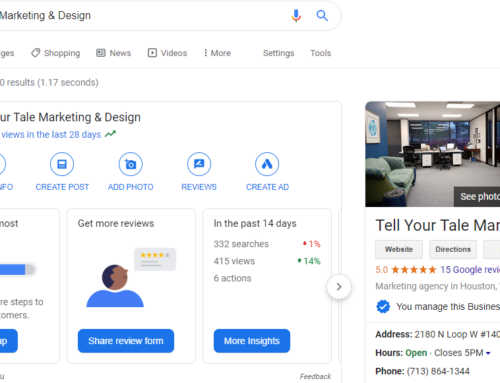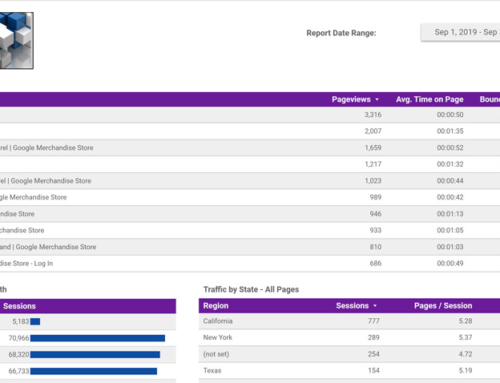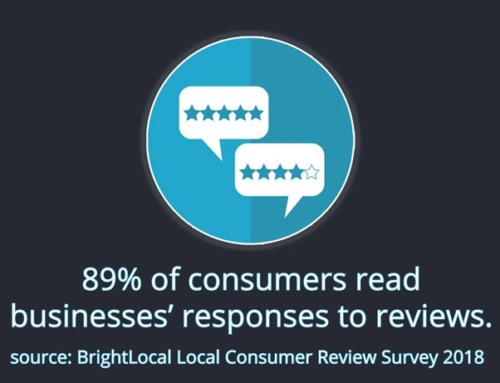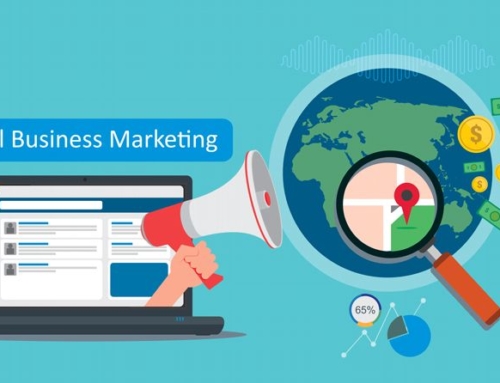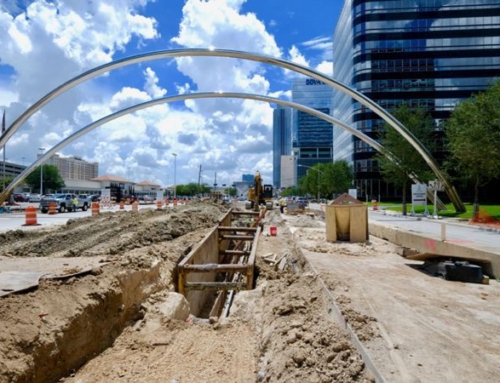
Search engine optimization (SEO) is constantly changing and can be quite complex. If you as a business owner or your marketing team needs guidance on tips for optimizing your website to attract more qualified and local web traffic, this is the definitive guide to SEO and local search. We’re regularly updating this page with the latest updates so bookmark this page and visit it frequently.
Setting Goals for Search Engine Optimization
All search engine optimization (SEO) efforts should start by clearly identifying goals that are important to your organization. The S.M.A.R.T. goals model can help you get started off on the right foot.
- Specific – The more specific your goal, the more effective you’re likely to be at achieving the goal. There’s a big difference between “drive more traffic to the website” and “generate 20 percent more leads over 6 months via the contact form on the Acme Model X page.”
- Measurable – To make improvements, you must be able to measure detailed progress based on the needed data to avoid guessing. At the same time, avoid information overload. Identify the measurable metrics that will help you gauge the effects of the SEO efforts.
- Attainable – There’s a big difference between closing 20 percent of the 10 web leads and closing 20 percent of 10,000 web leads, so it’s critical to set realistic goals. Do you have the time, budget and personnel required to achieve the goal? Is the timing of your SEO efforts in line with seasonal trends for your products and services?
- Relevant – The goal must be relevant to something that is valuable to the organization. Beyond knowing what you’re trying to accomplish, it’s important to know why the goal is being set and what the benefits of achieving the goal are. How do your SEO goals tie into your organization’s over-arching goals for the year?
- Timely – Have a clearly defined target date for achieving the goal, including checkpoints along the way. A goal with no deadline is likely to suffer from scope creep and might not ever be achieved. Having a deadline for the goal will also ensure the SEO efforts are evaluated for their effectiveness to decide whether to continue or to set different goals. The timeliness of your SEO efforts tie into the seasonality of your business as well.
Working through the goal-setting process above can be time-consuming, but it should help ensure the efforts accomplish a goal that provides value to the organization.
SEO Metrics to Monitor and Measure
As the adage says, “what gets measured, gets managed.” Every SEO project will have its own unique goals, which means each project will also have its own measurement requirements. Below are some metrics that you may want to consider keeping an eye on.
Conversion Rate
Tracking the conversion rate can help you understand the return on investment (ROI) that your SEO project is achieving. Conversion rates are individual actions or goals completed related to the goals you’ve set. The conversion rate is calculated by dividing the number of action or goal completions by the unique visits. An example is the number of people who downloaded a white paper on a specific web page, divided by the number of unique visits to that same web page.
Organic Traffic
This traffic source includes only visits directly from search engines such as Bing and Google, and is where SEO is focused. It excludes paid search results and referrals from other websites, links in emails and so on.
Traffic to the Website over Time
Monitoring the traffic to your website over time helps you see the results of your SEO efforts and can reveal developing trends. Traffic changes related to SEO projects typically don’t happen overnight and may require multiple months to have a significant effect. Reviewing traffic on a monthly basis is typically enough as compared to paid advertising that may require weekly or even daily monitoring. Depending on your specific goals, it may be a good idea to monitor weekly to spot room for improvement early.
Visits to a Specific Page
Your goals should be specific enough to require monitoring traffic to specific pages. Seeing spikes or dips in traffic can tempt you to make changes to your approach, but you should take into consideration how much data is available to help with making decisions. SEO is an ongoing long-term effort, unlike pay-per-click ads that may justify daily changes.
Traffic from Specific Campaigns
Although you’re focusing on SEO, basic campaign traffic data collection can help you audit the accuracy of your SEO traffic analysis. If the total traffic between organic and campaign traffic doesn’t add up, it’s likely you’ll need to revisit your SEO analysis. Campaign traffic can also help you improve SEO efforts by adapting what’s been learned during the campaign.
Click-through-Rate (CTR)
It’s great to show up in search results, but there isn’t much value if the searcher doesn’t click through to your website, unless they are simply looking for contact information. Page titles and descriptions have a big impact on the percentage of visitors who click through to your website. A low CTR means either the visitor found what they were looking for in the title or description, or that the visitor didn’t find the title and description appealing enough to click. In either case, it’s an opportunity for improvement since they aren’t likely to complete a form or make a purchase, if they don’t visit the site. If you’re not reaping the CTR goal, make adjustments and monitor the results. Continue tweaking until you reach your goal.
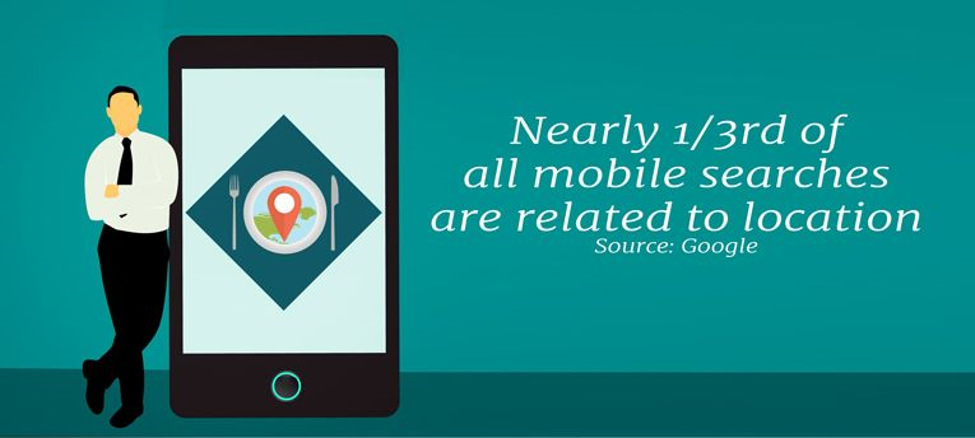
Local Search Engine Optimization and Mobile Web Design
According to Google, nearly 1/3rd of all mobile searches are related to location (as of 2016 data). Most local search terms tend to be along the lines of “restaurants near me” or “Houston restaurants in the Heights” for example, indicating most likely the searcher is planning where to eat soon or has an immediate need. Sending the right signals to clients, prospects and search engines is crucial to connecting with people at the right time.
These statistics from Google make it clear that local SEO should be taken seriously.
- 50 percent of consumers who conducted a local search on their smartphone visited a store within a day, and 34 percent who searched on a computer did the same.
- Local searches lead to more purchases than non-local searches. 18 percent of local searches on smartphone lead to a purchase within a day vs. 7 percent of non-local searches.
Building links, page optimizations and content writing should all be focused on localized intent, so that it’s clear to site visitors that they have found what they are looking for and that it matches up with their geographical location.
Be sure that all published business contact information includes the same information. Consistency is critical to helping search engines provide searchers with the most accurate information. Imagine how frustrating it is to arrive at a location where the business has moved. Would patrons want to do business with a company that didn’t take the time to update its address? Probably not.
Verify that your business name, logos, phone numbers, addresses and descriptions match throughout websites, social media profiles, business directory listings, review sites and especially Google My Business. Don’t overlook Chambers of Commerce, the Better Business Bureau and other local associations. It’s a good idea to do a Google search on your business and company leadership.
How Does Local SEO Benefit Businesses?
Local search engine optimization (SEO) works best for brick-and-mortar businesses whose primary focus involves working directly with consumers
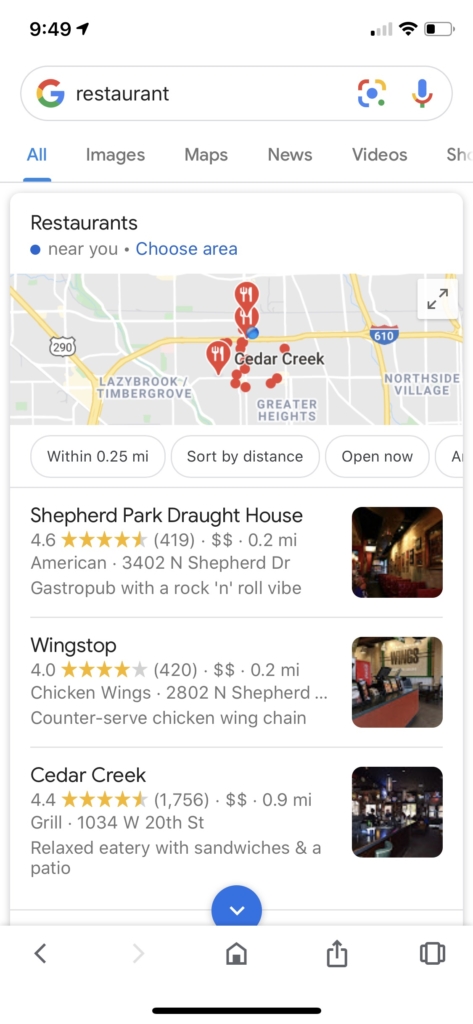
(so B2C rather than B2B). For instance, consider a visitor to a new city with a little time between meetings? If hungry, he/she will likely rely on a smartphone to search for restaurants very near the current location.
Optimizing your website for localized search results has great benefits. For example, when searching for “restaurant” on a smartphone, Google displays a map showing restaurants near my location. The buttons below the map allow filtering by distance, whether the business is open now, top rated and sort by distance.
Below the map and buttons, organic search results show three nearby restaurants. Each listing contains the business name, its Google ratings, distance from the current address, physical address and general description. When a searcher clicks on one of the restaurants in the search results an overview of the chosen restaurant appears with a blue phone icon that says “CALL”. That icon is automatically included by Google and it’s linked to the business’ phone number. Restaurants and other businesses that have done a great job optimizing for local searchers will achieve a top listing in Google that makes contacting them literally a click away.
How Else Can Local SEO Help Promote a Business?
Beyond the basic business listings, local search optimization can help visitors choose one business over another. In markets where competition is strong, optimization can play a big role in attracting prospects. Consider the following examples:
- People looking for a new doctor or dentist might search for one nearby, who is open now and accepts walk-ins. Thus, a business in this industry should keep its address and hours of operation updated on its website. Plus, hours on special holidays like President’s Day can also be highlighted as an opportunity to reach people on these days.
- A person who is working on a home remodeling project might need the help of a plumber to reroute some pipes for example. A plumber that lists its service area and uses neighborhood and community names on the company website is more likely to pull up in a search for this local service. An added bonus is the appearance of “being a local” and supporting the community.
- Someone who is in an unfamiliar with a particular city may want to order takeout food on the way back to the hotel. Restaurants can list not only their physical addresses, but also landmarks near them that out-of-town guests my use in online searches. Including details such as “located near Ho
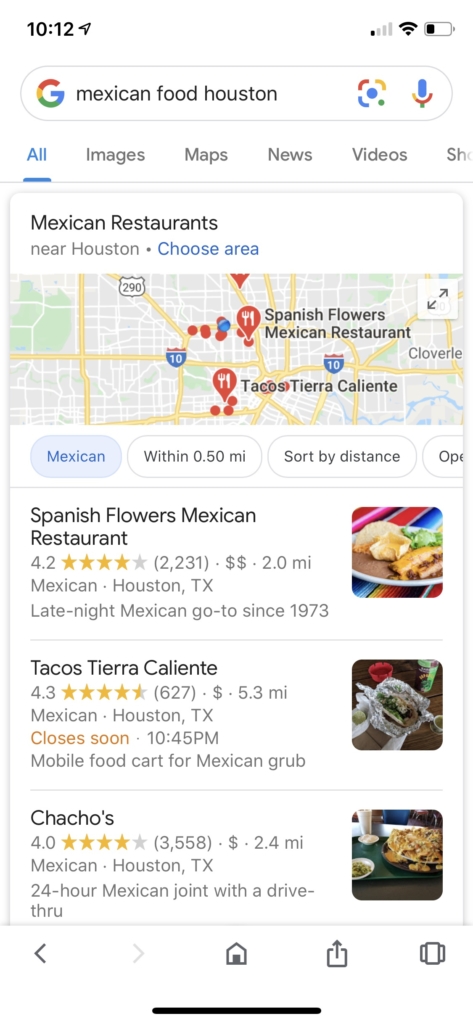 uston Intercontinental Airport” or “close proximity to the Houstonian Hotel” can help customize the search results delivered.
uston Intercontinental Airport” or “close proximity to the Houstonian Hotel” can help customize the search results delivered.
There are countless scenarios where someone may search for a product or service that is available locally.
Choosing Focused Keywords
Keyword research allows you to be more specific when targeting your ideal customer base. Below are five examples of phrases people might use to find Mexican food restaurants in Houston and trust us, the competition is high. While the way Google uses keywords has changed over the years, identifying how people search for you is an important consideration.
- Mexican food Houston Westheimer
- Mexican food Houston Heights
- Mexican food Houston tunnels
- Mexican food Houston catering
- Mexican food Houston Galleria
How are your ideal customers looking for you online? If you’re unsure, ask some of your best clients how they’d search for you online, if they didn’t already know about you. Don’t forget to optimize for zip codes as well. Some of our own clients came to us specifically in need of a professional writer, graphic designer, PR specialist or web designer close to them. For these clients, it was very important to offer convenient meeting locations and times, so this information is included on our website. In fact, working with a local franchisee has led to us working with other franchisees in that same network across the country.
For a practical look at selecting and using keywords on your website, read “How To Improve Your Website’s Search Engine Optimization” post.
Google’s Local Pack
The Local Pack displays at the top of Google’s search results when a visitor searches for location-specific information such as “Mexican food Houston”. Google values relevance, distance and prominence when determining which organizations to include in the Local Pack. Focusing your website content on these three factors can influence how Google views your site and whether you’ll be included in the Local Pack.
Local Service Ads: Paid Opportunities for Search Engine Optimization
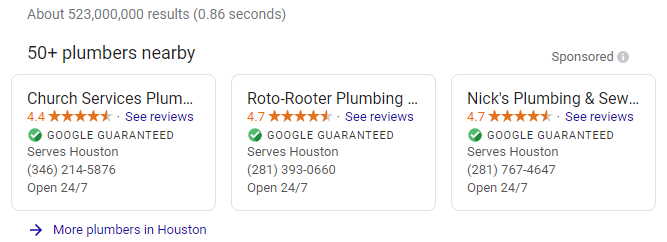
Our marketing agency is located in Houston’s 77018 zip code. On a desktop computer, a search for “plumbers near me” resulted in the screen capture above. This appeared at the very top of the search results. Note the “Sponsored” label in the top right corner, which indicates these three search results are paid ads. These are not the usual ads that you may be accustomed to seeing though. These are Local Service ads as shown by the green checkmark and “GOOGLE GUARANTEED” text. Why would Google guarantee a business that is not its own? Google determined certain trades such as plumbers and locksmiths were often culprits for fraudulent business practices. To help protect consumers from shady businesses, Google set up the “Local Services” ads, so that local businesses could show up more easily in local search results. Although the list is changing, businesses that may be eligible for Local Service ads include:
- Appliance repair services
- Carpet cleaning services
- Cleaning services
- Electricians
- Estate lawyer services
- Financial planning services
- Garage door services
- HVAC (heating or air conditioning)
- Immigration lawyer services
- Lawn care services
- Locksmiths
- Movers
- Pest control services
- Plumbers
- Real estate services
- Roofers
- Water damage services
- Window cleaning services
Depending on the type of business you represent, your prospects may benefit from finding a reputable service provider at a critical time (dealing with a broken water pipe or clogged sink). Everything needed to hire your business is found conveniently through the ad and verified by Google. The pre-screening process by Google combined with customer reviews provides a level of trust that is hard to beat. This is yet another way to enable a local approach to search that also takes into account service providers who may be needed at unconventional times.
Opportunities for local advertising continue further as seen in the next screenshot. Immediately following the Local Services ads are more ads. This next set of ads (between the Local Pack and the map) has varying value, depending on whom you’re targeting. 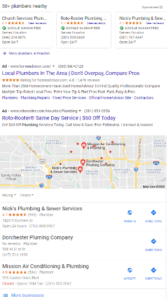 Some people interpret businesses in this ad spot as more expensive since they clearly are advertising to be at the top of the results. This group of customers tends to skip down to the next set of results. Other people simply look at the first group of results.
Some people interpret businesses in this ad spot as more expensive since they clearly are advertising to be at the top of the results. This group of customers tends to skip down to the next set of results. Other people simply look at the first group of results.
Finally, you’ll see the “local 3 pack” pinned in the Google map. Those same three businesses show up immediately below the map. The listings all include the business name, review ratings, service category, address and phone number. Note that the first listing shows the business is “Open 24 hours,” another enticement for someone to call that business first. Although the third listing has the best review rating, if a water pipe burst in your house, you would most likely call the first listing right away, especially since it’s open all the time. Customizing your content to a local audience and specifically to their needs really can impact the type of search traffic your website generates.
Continuing even further down the search results page takes you to the organic search results. Organic search results display based on a close match between the search terms entered by the searcher and the content on the displayed web page. (That might not be your home page.) In this example, we found 10 listings for local plumbers, followed by more ads. Some people (myself included) will skip past the paid advertising every time and instead intentionally select from the organic results in the order that they appear. For this reason, paying attention to your website text and how it incorporates local information is important.
Voice Search
This is a rapidly growing area as smartphones, Alexa, Siri and other devices get smarter. Typing “Mexican food near me” is literally easier said than done. With voice searches, people tend to be more specific and descriptive when talking to devices. They might say “Alexa, where’s the best Mexican food restaurant near me that is mid-priced?”, but when it comes to typing people are more inclined to type less details such as “Mexican food near me”. This area of search optimization is evolving rapidly as the artificial intelligence (AI) technologies that power these handy devices become more advanced. Add to your website content that specifically answers the voice-activated search.
Your organic search results should be revisited periodically as the search results change over time with new players entering the market and more established businesses up-ing their online game. Including content on your website that appeals to local buyers AND includes highly relevant content can push your business into the leader role. Still, expecting overnight success is not realistic. Search engine optimization and local search are long-term efforts that can pay big with diligence and patience. Looking at the tools that are available to help you, especially those by Google, are also a good investment. Read our “Local SEO: Tools of the Trade” post for insight into several tools.
SEO: Long-term efforts with solid gains
Search engine optimization is a long-term, ongoing effort that requires a deep understanding of how your efforts increase traffic to your site and how those efforts result in conversions. It is a complex and every-changing landscape, but it’s worth the effort. For the most part, SEO costs are spread out over a longer timeframe than paid advertising and your SEO costs revolve mostly around your time invested.
Contact us when you’re ready to take the next step or when you’re ready to start an exciting SEO project.


